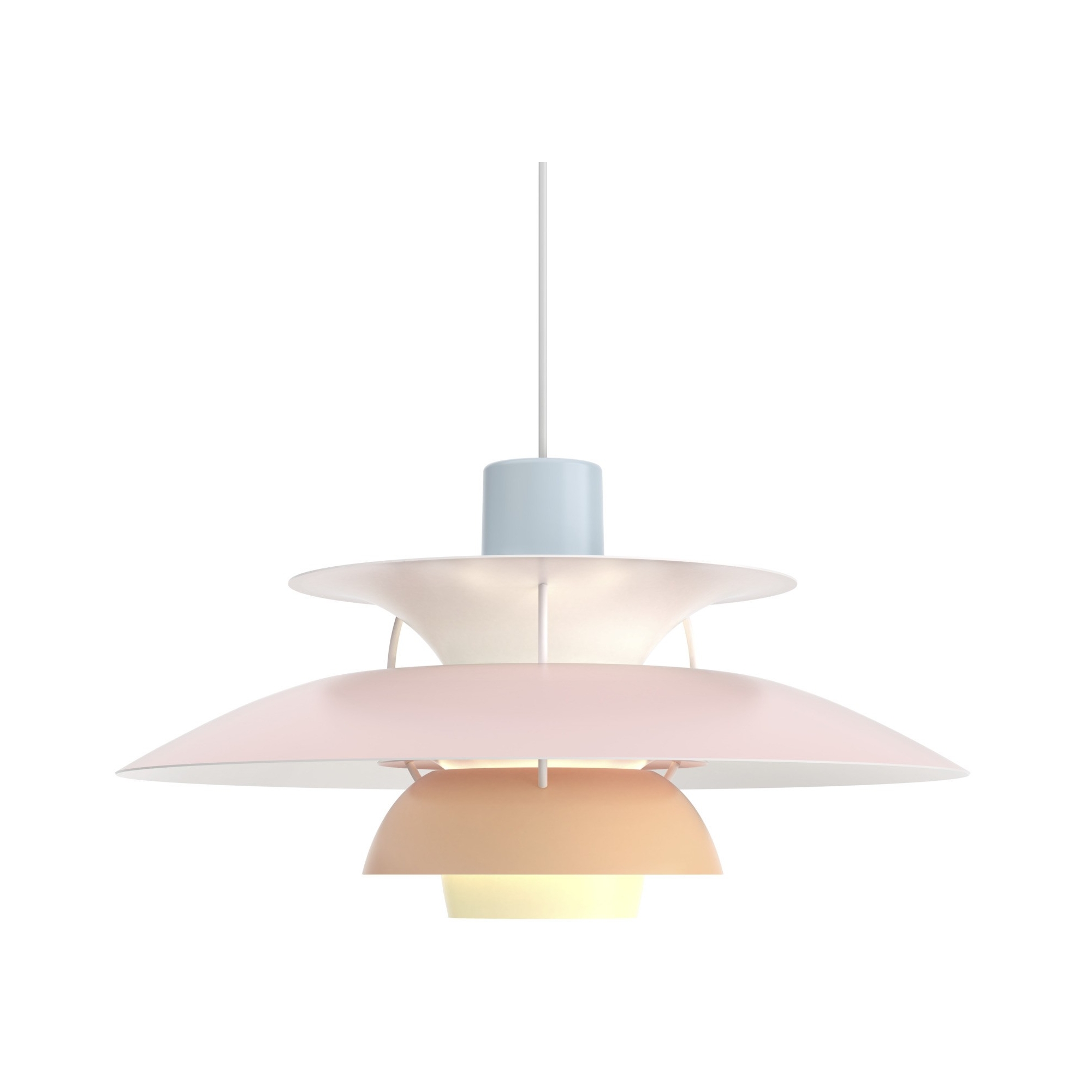





Louis Poulsen's PH5 pendant, launched in 1958, is the best-selling and most famous lamp in the history of Scandinavian design.
829.17 tax excl.
The PH5 suspension lamp was launched by Louis Poulsen in 1958 as an ordinary product, and little did anyone suspect that it would become the archetypal PH lamp.
Its success stems not only from its striking aesthetics, but also from the impeccable quality of its light: thanks to Poul Henningsen's clever calculations, the light emitted optimizes the bulb's power without ever dazzling, whatever the lamp's position.
To bring the artificial light closer to natural light, Poul Henningsen added small shades with red and blue interiors to reinforce these ends of the light spectrum.
Finally, to take account of the variable shape of the bulbs, he added a screw system to optimize their vertical positioning.
Bulb : E27 75W (not included)
Class : IP20
Poul Henningsen

Born in Copenhagen, Poul Henningsen's mother was the famous Danish actress Agnes Henningsen. He never graduated as an architect, but studied at the Technical School in Frederiksberg (Denmark) from 1911 to 1914, then at the Technical College in Copenhagen (1914-1917).
He began practicing traditional functionalist architecture, but over the years his professional interests evolved to focus primarily on lighting, which is what he is most famous for. He also branched out into writing, becoming a journalist and author. For a brief period at the start of the Second World War, he was chief architect of Tivoli Gardens in Copenhagen. But like many other creative people, he was forced to flee Denmark during the German occupation, and soon became a vital part of the Danish colony of artists living in Sweden.
His long collaboration with Louis Poulsen began in 1925 and lasted until his death. To this day, Louis Poulsen continues to benefit from his genius. Poul Henningsen was also the first editor-in-chief of the business magazine “NYT”. Louis Poulsen's CEO at the time, Sophus Kaastrup-Olsen, offered PH the magazine because he had been fired from the Danish newspaper he worked for (his views were too radical).
Data sheet